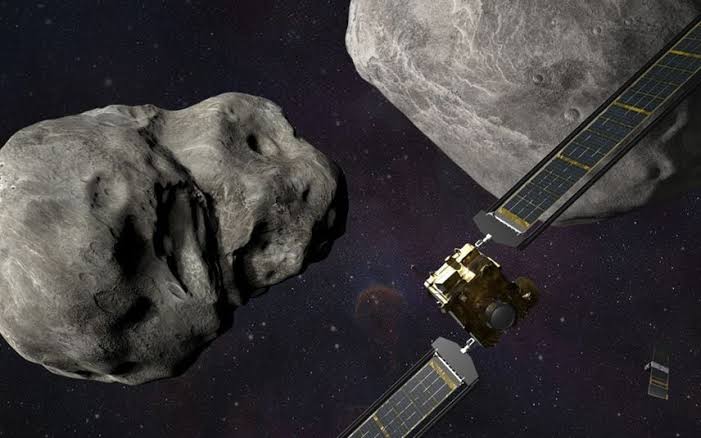
As part of a historic test of humanity’s capacity to safeguard Earth from a potentially catastrophic collision with space rock, a NASA spacecraft purposefully crashed into an asteroid on Monday.
The DART probe of the organization, which stands for Double Asteroid Redirection Test, performed the ground-breaking operation on the innocuous and small space asteroid known as Dimorphos, which is located around 6.8 million miles from Earth.
The $325 million mission’s objective was to understand whether “nudging” an asteroid could alter its trajectory, providing scientists with a practical assessment of planetary security technologies.
Italian spacecraft take images of the staged crash
The hit, which occurred 11 million miles from Earth, was captured by the tiny Italian spacecraft LICIACube as it sailed beside DART. The Italian Space Agency’s 27 September publication of the first LICIACube photos reveals a sizable fireworks-like plume emerging from Dimorphos after DART collided with it. Rapidly growing like a huge puff of smoke, a cloud of pebbles, and other debris.
Elisabetta Dotto, head of the science team for LICIACube at the National Institute for Astrophysics in Rome, stated at a press conference that studying the evolution of the plume will provide insight into Dimorphos’ physical characteristics. Researchers can estimate how much of DART’s kinetic energy went into emitting debris from Dimorphos and how much may have gone toward changing the asteroid’s orbit—the mission’s goal—by analyzing how the plume developed and dispersed.
About the Dimorphos
Dimorphos, which is located 9.6 million kilometers from Earth, is actually the companion of Didymos, which is Greek for “twin,” a 2,500-foot asteroid. Didymos, which was discovered in 1996, rotates so swiftly that astronomers believe it ejected debris that ultimately led to the creation of a moonlet. Dimorphos circles its parent body 1.2 kilometres away and is about 525 feet across.
A camera that is utilised for navigation, aiming, and recording the results is the only tool the Dart probe possesses. Dimorphos will appear as a small glimpse of light an hour prior to the crash, seeming larger and larger in the pictures sent back to the quarters. It is thought to be essentially a pile of rubble.
Even though the actual strike should be obvious right away, it can take a few weeks or longer to confirm the moonlet’s orbit.
The NASA aircraft crash is a historical test for technology
The $330 million expertly staged accident was webcast by NASA, leaving spectators feeling like deer in headlights. The scientific and engineering team, as well as the general public, were able to observe a 525-foot rock develop from a small dot of light to a massive boulder that filled the whole frame through a camera on the spaceship. The broadcast provided an incredible closeup of an action occurring 6.8 million miles away, with only a possible 45-second delay.
While the spacecraft rushed towards its end, there was a mixture of calm and expectation inside DART’s mission control center at JHUAPL, despite the on-target collision. The engineers didn’t have to use any of the 21 different backup plans they had stashed away during the accident since nothing went wrong.
The remaining four hours of DART’s journey were largely automated, and in the penultimate hour of its approach, the spacecraft’s navigation system locked on to Dimorphos. As the spacecraft collided with the asteroid, DART’s main camera continued to send images to Earth every second until the feed went dark.
This event mark-up an event that helps us get a solution for meteor crashes. Although there’s still much to find out about the project, we will get to know what is to come from NASA’s projects and tests.